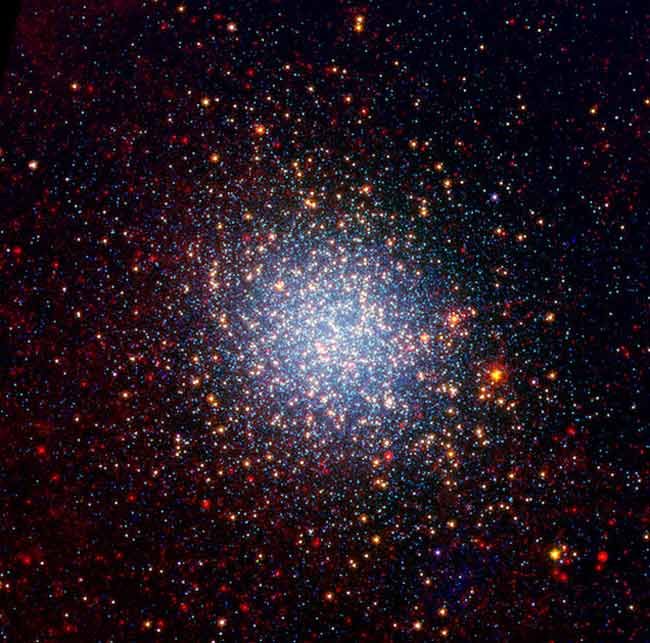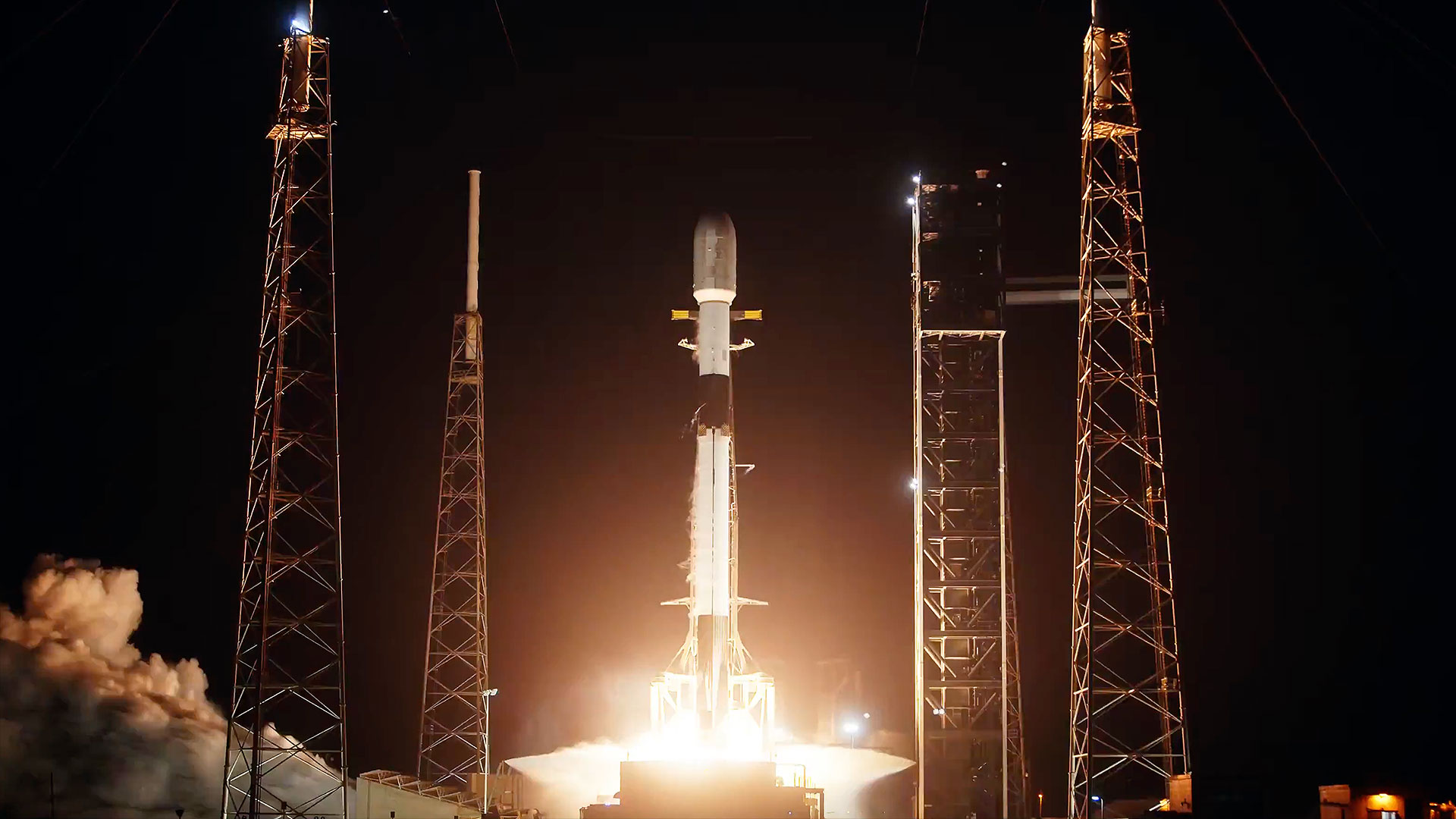Middleweight Black Holes Nearly Ruled Out

There is no middle ground when it comes to black holes, which tendinstead to be either petite or gargantuan, a new study suggests.
Black holes are known to exist in two classes: The stellarvariety result from exploded massive stars and typically pack the mass of afew stars. The super-massive class can weigh millions or billions of stellarmasses and reside at the centers of galaxies. Astronomers have debated foryears whether a middleweight category exists, with evidence several timessuggesting they do but then being refuted.
Now, astronomers have scoured one of the few suspected hidingspots for medium-sized black holes in a globular cluster, and conclude they arerare or nonexistent.
"Some theories say that small black holes in globularclusters should sink down to the center and form a medium-sized one, but ourdiscovery suggests this isn't true," said Daniel Stern, an astrophysicistat NASA's Jet Propulsion Laboratory in Pasadena, Calif., and co-author of thestudy detailed in the Aug. 20 issue of Astrophysical Journal.
Scientists had thought that medium black holes mightlie hidden among millions of stars in globular clusters, which sit withingalaxies containing hundreds of billions of stars. Such black holes ranging insize from 1,000 to 10,000 times the mass of the sun should sit inside globularclusters like scaled-down versions of galactic black holes — at least intheory.
Previous studies have hintedat the existence of medium black holes, fingering star clusters withsuspiciously large masses.
To see if there was anything to this, Stern worked withresearchers led by Stephen Zepf, an astronomer at Michigan State University inEast Lansing, to probe a globular cluster located 50 million light-years awayin a neighboring galaxy. (A light-year is the distance light will travel in a year, orabout 6 trillion miles or 10 trillion kilometers.)
Breaking space news, the latest updates on rocket launches, skywatching events and more!
They eventually found the X-ray signature of an active black holein the globular cluster named RZ2109, using the European Space Agency'sXMM-Newton telescope.
Next, the researchers determined the size of the black hole byusing the W.M. Keck Observatory on Mauna Kea in Hawaii to get the chemicalfingerprint of the globular cluster. Computer simulations of the chemicalanalysis revealed high-speed "winds" coming out of the black hole, indicatingthat it was baby consuming too much material and spitting some of it out.
"If an intermediate-sized black hole were accreting thismaterial, it wouldn't be too big of a deal for it," Zepf said. "Butif a small black hole were accreting this material, it would be a lot for it totake and therefore some material would be ejected in the form of highwinds."
The astronomers estimated that the black hole was relatively tinyat just 10 times the mass of our sun.
"If a medium black hole existed in a cluster, it would eitherswallow little black holes or kick them out of the cluster," Sternexplained.
Zepf suggested that medium-sized black holes might still lie hidden in dwarfgalaxies on the outskirts of larger galaxies such as our Milky Way, but it wouldbe difficult to track down.
- Video: Black Hole: Warping Time & Space
- Top 10: The Wildest Weather in the Galaxy
- Vote: The Strangest Things in Space

Space.com is the premier source of space exploration, innovation and astronomy news, chronicling (and celebrating) humanity's ongoing expansion across the final frontier. Originally founded in 1999, Space.com is, and always has been, the passion of writers and editors who are space fans and also trained journalists. Our current news team consists of Editor-in-Chief Tariq Malik; Editor Hanneke Weitering, Senior Space Writer Mike Wall; Senior Writer Meghan Bartels; Senior Writer Chelsea Gohd, Senior Writer Tereza Pultarova and Staff Writer Alexander Cox, focusing on e-commerce. Senior Producer Steve Spaleta oversees our space videos, with Diana Whitcroft as our Social Media Editor.
